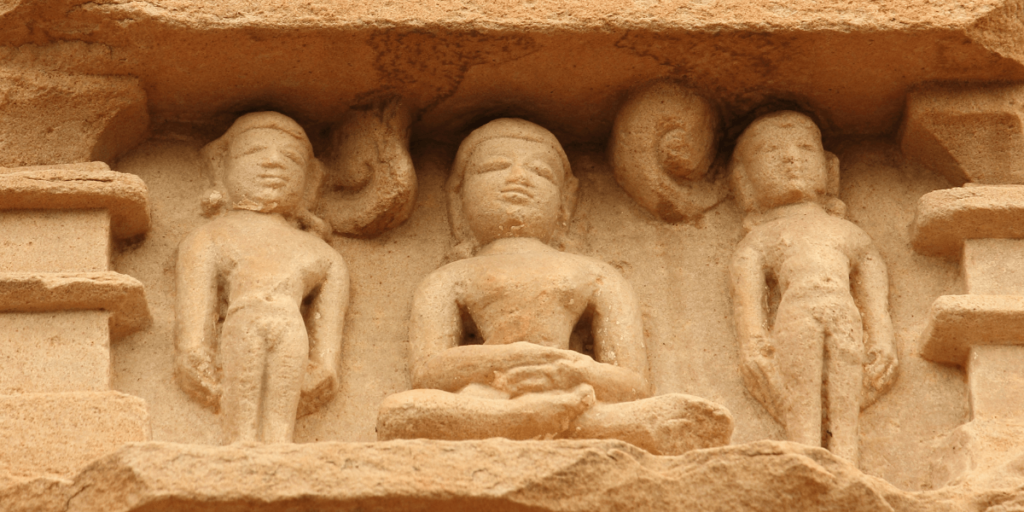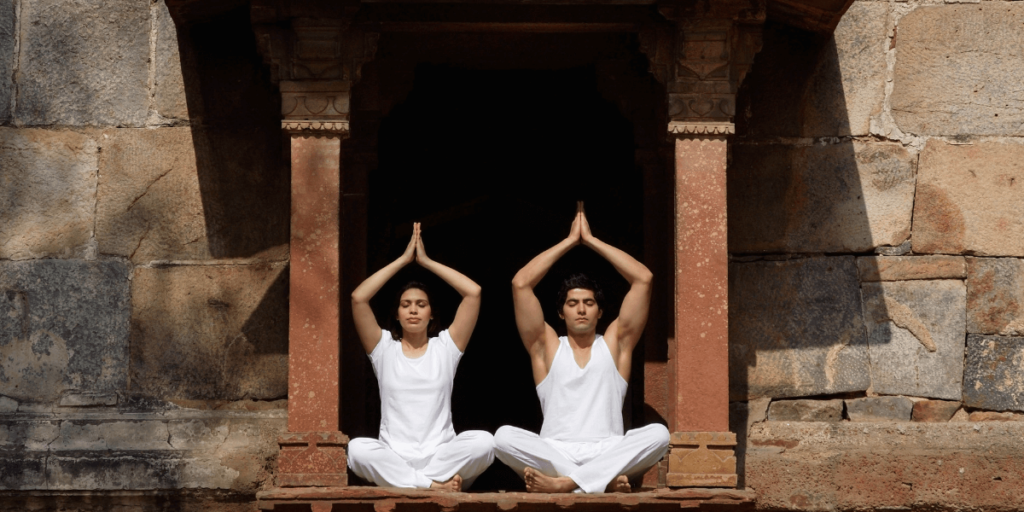Historians, anthropologists, and yoga practitioners have debated the origins of yoga over the years. Due to the oral transmission of scriptures and the hidden nature of its teachings, it is fraught with uncertainty. Particularly it is because the yoga scriptures were written on delicate palm leaves that could easily be damaged, destroyed, or lost. As such, there is no certainty about its chronology or precise origin, especially given the numerous theories. Some aren’t sure where they came from, while others are very specific.
Despite that, this article will help you clear things out and explore where yoga originated, when it was created, and lastly who invented yoga.

The Beginning of Yoga
Yoga’s origins can be traced back to the Indus-Sarasvati civilization, which flourished over 5,000 years ago in Northern India. The Rig Veda, an ancient sacred text, is where the word yoga first appeared. The Veds are a collection of four ancient Sanskrit sacred texts.
The Rig Veda is the oldest of the Vedas, consisting of over a thousand hymns and mantras organized into ten chapters known as a mandala and used by Vedic age priests. It is, in particular, a collection of texts that includes rituals, mantras, and songs.
Meanwhile, the Rishis (sages) improved and developed yoga, documenting their practices and views in the Upanishads, a massive work with over 200 scriptures. Yoga is one of Hinduism’s six schools of philosophy, and it is also an important aspect of Buddhism’s meditation practices.
During the Vedic era, Vedic priests were largely self-disciplined and shunned all sorts of indulgence; instead, they performed yajna sacrifices and utilized positions that most researchers believe were the precursors of the types of Yoga poses we practice today.

The Development of Yoga
In the third century BCE, the term “yoga” first appeared in Jain, Hindu, and Buddhist texts. In Mahayana Buddhism, Yogachara was the name given to the practice of yoga for both spiritual and meditative objectives. Yoga was first adopted in the 5th century for meditation and religious purposes, not as a form of exercise. Yoga’s early forms were primarily employed for spiritual purposes and were founded on a set of core beliefs.
As a result of the Indian nationalist movement, yoga developed in popularity as a manner of boosting pride and cultural identity. Unexpectedly, until India’s independence in 1947, powerful families, organizations, and activities actively encouraged the practice of Yoga. This results that Yoga is currently done by millions of individuals all over the world in many forms and modifications.

Who Invented Yoga?
Nobody is certain who invented yoga or when it first arrived in India. Although there are major personalities throughout history who inspired the practices and areas of yoga that we see today, however, yoga was not invented by one person. As time passed, many people developed their own approaches to yoga, leaving us with the Patanjali Yoga Sutras and other important yogic ideas. Several branches have evolved throughout history, and some of them have historical origins and founders.
As you see, it’s apparent that yoga did not have a single founder, and it appears that the discipline developed naturally over time. Hence, the short answer to this question is that we have no idea who created yoga.



